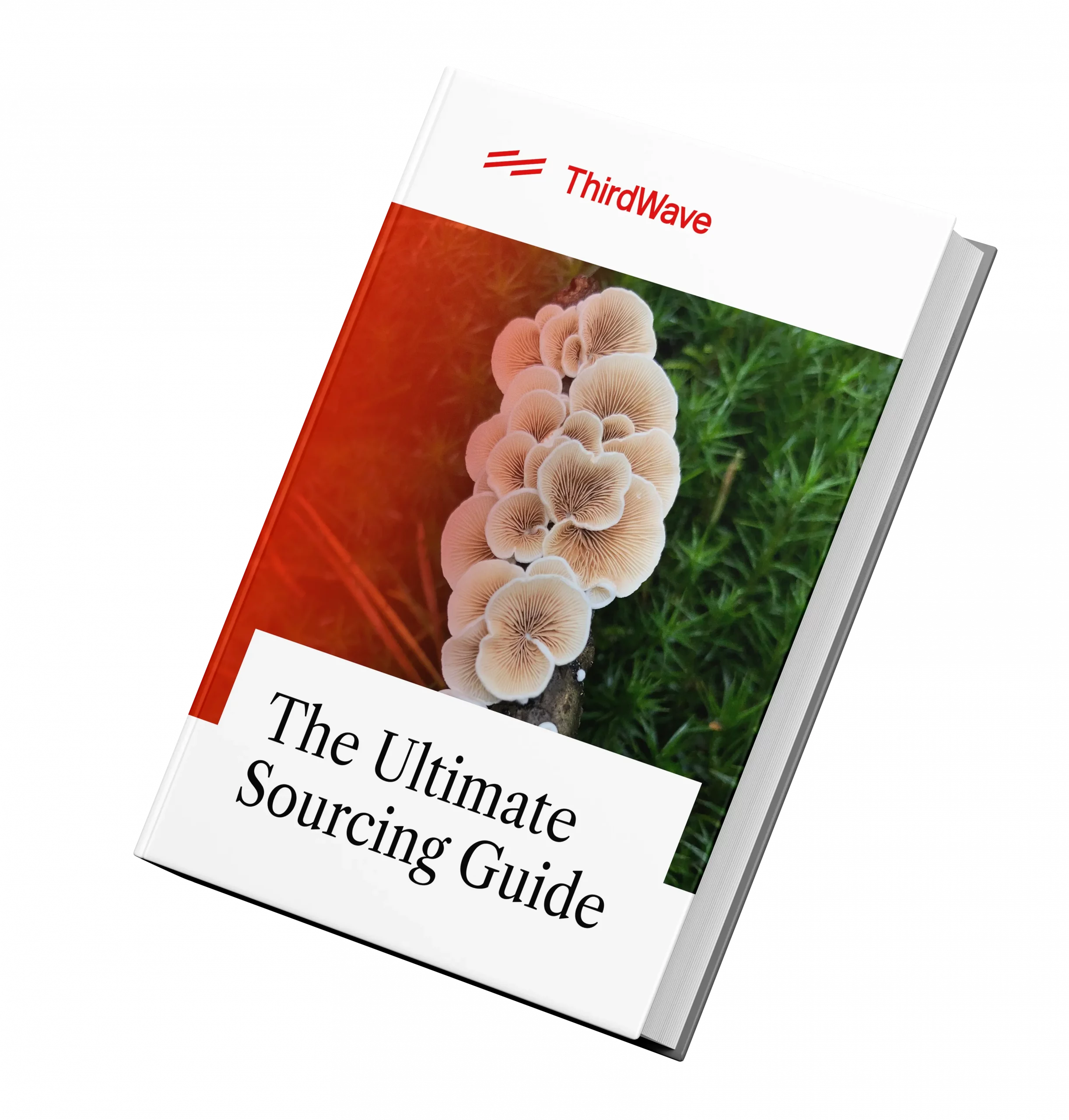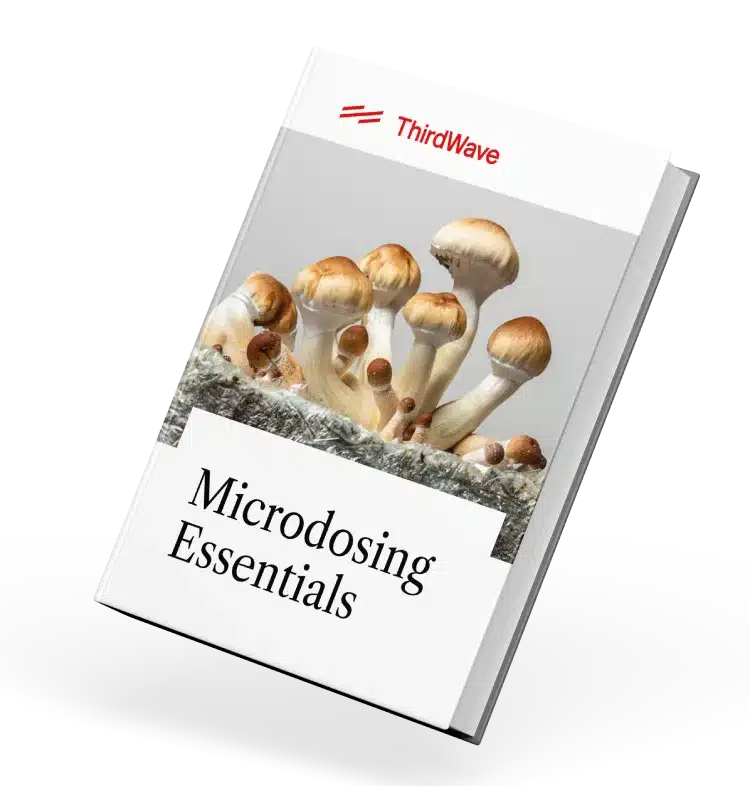The Ultimate Guide to
Datura
(Jimsonweed, Devil’s weed, Devil’s trumpet, Moonflower, Toloache)
Datura is a potentially illegal substance, and we do not encourage or condone the use of this substance where it is against the law. However, we accept that illegal drug use occurs, and believe that offering responsible harm reduction information is imperative to keeping people safe. For that reason, this guide is designed to ensure the safety of those who decide to use the substance.
Overview
01Of the nine datura species, the best known are Datura innoxia for its well-documented use in pre-Colombian America, Datura metel for its use in traditional Chinese medicine, and Datura stramonium for its long history of use in sacred rituals. Other names for the Datura plants are Jimsonweed, Moonflower, Devil’s Weed, and Devil’s Trumpet.
In its wide variety of traditional uses, the seeds, leaves, flowers, roots, and stems of Datura plants are ingested, smoked, or made into a skin ointment. Certain preparations produce highly visionary experiences, which are characterized by lasting delirium and realistic hallucinations, including visitations from long-dead relatives.
Fatal overdoses and adverse reactions are very common with datura. Advocates of the plant rarely recommend it without extreme caution.
Experience
02What to Expect
The first effects of datura are generally felt within 30 minutes to an hour after taking it, though it could take up to four hours to fully manifest.[2] The plant’s peak effects can last for several days, but 12-24 hours is common.[3] There could also be some lingering “weirdness” affecting coordination, perception, and speech for up to a week afterward.[4]
During onset, it’s common to experience dry mouth, pupil dilation, a feeling of electricity and energy changes, weightlessness, and a sense of being “pulled” about by gravity.[5][6] There’s also a gradual dissociation from consensus reality, which may or may not be frightening. Strangely, it could even feel completely normal.[7]
This “normalcy” is especially true of Datura-induced hallucinations, which can appear perfectly usual, even if they’re totally out of context. Inanimate objects are known to start talking, and the unexpected appearance of absent friends and family is common. Indistinguishable from real people, these entities may just stand and stare at you without saying a word, or they might start a lively conversation with you.[8][9] Most people don’t realize they’ve been talking to themselves until they look away for a second and the apparition disappears.[10][11][12][13]
Dr. David Luke, associate professor of psychology at Greenwich University and psychedelic enthusiast, describes the datura experience as a “waking dream” and says it’s the only psychedelic that is a true hallucinogen. “It’s not like there’s any kind of colorful geometric patterns or anything like that,” he said in an interview with Third Wave founder Paul Austin. “You’re just like, everything looks normal and then you turn around and you’re having a conversation with a werewolf, and that seems normal. And then you turn back and it disappeared.”
You can listen to Dr. David Luke’s interview below or Click here to read the transcript
Hallucinations affecting the senses of touch, taste, and smell are common. “Phantom cigarettes,” in particular, are a hallmark of the Datura experience—even non-smokers have reported the phenomenon of seeing and feeling an imaginary lit cigarette in their hand, sometimes having rolled it themselves. In fact, these hallucinations can be so indistinguishable from reality that the sudden disappearance of one of these phantom cigarettes can prompt a frantic search on the floor for it.[8][14] You’re also likely to find yourself picking tiny insects off your clothes.
Other visual effects include an unrecognizable reflection, color differences, environmental drifting and distortion, snake-like patterns, and flashes on the periphery of your vision.[2][3][4]
Physical effects can include dry mouth, eyes, and skin; increased heart rate and temperature; sensitivity to touch; blurred vision; dizziness; and nausea. Urination may become more or less frequent, even to the point of incontinence. Some people experience nothing but these physical symptoms.[15][2][3][4][5][8][16]
Agitation, paranoia, and fear are also common, along with depersonalization, amnesia, and increased suggestibility. Some users report “telepathy” and “teleportation,” but those could just be symptoms of memory loss.[15][2][3][5]
Datura and ayahuasca
Datura is also sometimes integrated into ayahuasca brews under the pseudonym toé. This mix has its pros and cons. Like ayahuasca ceremonies, stand-alone toé ceremonies have been practiced by Amazonian communities for generations. Called dream journeys, these datura-focused experiences are used to enhance the power of divination and vision.
In some cultures, adding toé to an ayahuasca brew is a traditional element of the ayahuasca ceremony. But with the growth of ayahuasca tourism has come a rush of underqualified or even pseudo shamans looking to cash in on the boom. And in these settings, the brews may be mostly made up of datura with little to no ayahuasca at all, which, given datura’s risk level, can be dangerous. Whether embarking on a toé journey or an ayahuasca ceremony, it’s important to vet the retreat and acting shaman in order to avoid a dangerous situation. It also doesn’t hurt to ask even reputable places what exactly they’re putting in their brew.
Effects
03Pharmacology
Atropine, scopolamine, and hyoscyamine/daturine (the l-enantiomer of atropine) are the primary active constituents in all Datura species. As tropane alkaloids, they’re structurally related—each have a seven-membered tropane ring with an N-methylated nitrogen bridge, and a propionic acid chain substituted at R2 with an aromatic phenyl ring and R3 with a hydroxyl group OH-. The tropane ring and acid chain are connected at R3 and R1 via an oxygen atom.[3]
Receptor Binding
The three primary alkaloids in Datura are antimuscarinic anticholinergics, which means they competitively block the muscarinic acetylcholine receptors. Their effects on the parasympathetic nervous system lead to abnormal breathing and heart rate, among other symptoms. Additionally, atropine and scopolamine are able to cross the blood-brain barrier to affect the central nervous system as depressants.[17][18][19]
In Third Wave’s Ultimate Guide to Safely Sourcing Psychedelics, you will discover an astonishing menu of psychedelic medicines… In Third Wave’s Ultimate Guide to Safely Sourcing Psychedelics, you will discover an astonishing menu of psychedelic medicines… Beyond LSD and Psilocybin is a field. This guide will take you there.
…and how to source them without legal risk. Beyond LSD and Psilocybin is a field. This guide will take you there.
…and how to source them without legal risk.
Benefits & Risks
04Potential benefits
For many people, a Datura experience can be mind-expanding and eye-opening in the same way as many psychedelic plant medicines. Even after an uncomfortable or even frightening trip, many people find that the insight they gained from the experience was worth it for their own personal growth and healing.
The potential therapeutic aspects of Datura’s psychoactive qualities have not been steadfastly researched, but the plant does have a place in mainstream medicine. Datura has long been used as an anti-inflammatory, a respiratory decongestant, a painkiller, a sleeping aid and more. It also has the potential to offer researchers a deeper understanding of Alzheimer’s.
Risks
Taking Datura comes with many risks and should be done with extreme caution. Many healthy people have died from ingesting Datura, usually as a result of respiratory paralysis or heart failure.[18] Sometimes a fatal reaction can take more than twelve hours to manifest.[20] As mentioned before, it’s difficult to determine a universally “safe” dose. A dose as small as 100 mg of dried seeds has been known to kill, while others have taken substantially more than that and lived.[17]
Datura poisoning is characterized by 10 key symptoms, or the “10 Ds”: dryness of mouth; dysphagia (difficulty swallowing); dilated pupils; diplopia (double vision); dry, hot skin; drunken gait (or ataxia); delirium (with hallucinations, amnesia, incoherence); delusions; dysuria (difficulty urinating); and death.[21]
Treating an atropine or scopolamine overdose usually involves swallowing activated charcoal to delay the absorption of the alkaloids, as well as injecting physostigmine intravenously. Physostigmine is effectively an antidote to Datura, crossing the blood-brain barrier and agonizing the affected muscarinic acetylcholine receptors. Unfortunately, its activity is relatively short-lived and not suitable for people with heart problems.[18][22]
Based on the potential side effects, it’s obvious that the Datura plant is not to be taken lightly. It is absolutely essential to have a sober sitter present when experimenting with Datura—not only to keep you safe from accidental injuries but also to monitor your body’s response to the plant.
A good sitter should check that your heart rate remains between 50-180 beats per minute and that your temperature is within safe limits (below 103 degrees Fahrenheit).[4] If not, they should be ready to drive you to the hospital and explain what you took (an anticholinergic drug) to make sure you’re not given anesthetics, aspirins, or any other treatments with potentially fatal interactions.[20] Needless to say, driving yourself anywhere while on Datura is extremely dangerous.[8]
Because a Datura trip can be many hours or even days long, it may be necessary for multiple sitters to watch you in shifts.[18] It’s also important to eat and stay hydrated after experimenting with Datura. Plain, starchy meals with green vegetables are best.[4]
Another thing to keep in mind is setting. Being around large bodies of water is a major risk due to the overheating effect of Datura; many people have drowned after going for an innocent dip.[15][18] Being outside in bright sunshine can also be painful for the eyes, so sunglasses are recommended.[4] Strenuous physical activity should be avoided, and public settings are inadvisable because of the risk to other people as well as the influx of chaotic stimuli. Some Datura users have been known to break into people’s homes and even become violent.[4][8]
Therapeutic Use
05The anticholinergic effects of atropine, as well as scopolamine and hyoscyamine, are particularly useful for treating organophosphate exposure, e.g. from pesticides.[25] They also offer a basis for research into Alzheimer’s disease and the development of treatments aimed at replacing depleted acetylcholine.[26][27][28]
Scopolamine also has a long history of use in medicine and remains the first-line treatment for motion sickness, usually in the form of a transdermal patch.[22][29] It has been shown to reduce symptoms by 15% and is routinely used by NASA.[30][31]
Scopolamine also shows promise as a fast-acting antidepressant. Although it exhibits some transient side effects, it relieves symptoms of depression (both major and bipolar) within 1-3 days of treatment.[32][33][34]
Some evidence suggests that dried, crushed Datura stramonium is more effective than standard antibiotics against bacteria—at least when combined with filtered cow urine and North Indian Rosewood.[35] Datura stramonium and Datura metel have also been shown to have anti-inflammatory properties.[36][37][38][39]
Various datura species could one day be used in cancer treatments too, since they’re apparently capable of inhibiting human breast, larynx and colon cancer cell growth by apoptosis.[40][41][42] Datura also shows promise for treating symptoms of Parkinson’s disease, rabies, neuralgia, alopecia, and pre-menstrual syndrome. It’s an effective mosquito repellant to boot.[17][2][19][4][43]
Personal Growth
06Another unique feature of the Datura experience is the perceived opportunity to speak with dead friends and relatives face-to-face, just as they were in life, potentially offering closure.[12] Visits and messages from spirit guides are also commonly reported—and they typically impart instructions for how to live better. Encounters with plant spirits, in particular, have made people more acutely aware of their role in the web of existence.[7]
Legality
07In Australia, Datura and atropine are Schedule 2 substances, which is the lowest classification.[46] It’s also illegal to possess and sell in Brazil. In the UK, Datura should, technically, be covered by the Psychoactive Substances Act, but it’s unlikely this would be enforced. Very few countries have legislation concerning Datura specifically and the plant is completely legal in Canada.[45]
Getting started with psychedelics, like Datura, and finding consistent legal access is a challenge. That’s why we built an online community of trusted providers ranging from therapists to clinics, to retreats. We also curated a detailed psychedelics sourcing guide to help you safely purchase from trustworthy vendors. Whatever your preference, we hope you find what you’re looking for.
History & Stats
08In Ancient Greece and Rome, Datura stramonium was an important sleep aid and painkiller.[17] It was also ritually burned for the Oracle at Delphi to produce a trance-inducing smoke.[2]
Datura also played a role in Buddhist and Hindu esotericism as a crucial ingredient for black magic rituals. Among other things, it was used to appease wrathful deities and to inflict insanity, death, and discord on one’s enemies[48][49][50] In addition to salt, oil, and black mustard seeds, datura was one of the “supreme destroyers” in tantric tradition.[51] It’s also a symbol of Shiva, the “destroyer and transformer,” from whose chest it is said to have sprouted and to whom it is still offered in ritual.[47][52]
The Aztecs saw both the destructive and creative potential of the plant, which they knew as toloatzin. They crafted healing rubs out of it, but also gave it to human sacrifice victims before removing their hearts. The ancient Colombian Indians, meanwhile, are said to have drugged the wives and slaves of dead men with Datura-laced beer before burying them alive with the deceased.[53]
In medieval Europe, Datura was firmly associated with witchcraft and was thought to be used to make “flying ointment” for transporting witches to their midnight sabbats. It’s also thought to have been administered through the absorbent membranes of the vagina using broomstick handles, hence their association with the craft.[15][54]
Despite its notoriety and distinctive appearance, Datura is often mistakenly eaten as food. In 1676, a troop of British soldiers in Jamestown, Virginia, boiled up the leaves of Datura stramonium for a meal and went insane for eleven days. Sitting around gawping, grinning, sneering, and blowing feathers in the air—apparently unaware of their own excrement piling up—they were confined for their own safety until the effects wore off. And though the soldiers had no memory of their experience, Datura got its nickname, “jimsonweed,” (from “Jamestown weed”) in their memory.[2][55]
From the 1800s, the potential use of Datura in mainstream medicine was explored. Dr. R. Schiffman’s Asthmador Cigarettes were one of several medicated smoking products developed to help relieve asthma—many of which contained nothing but the plant itself. These cigarettes were eventually banned due to their unusual side effects and increasing recreational use, but many long-time asthma sufferers—including writer Marcel Proust—swore by them for relief.[56]
In the early 1830s, the first of Datura’s active alkaloids, atropine, was isolated. Not long after, scopolamine, another Datura alkaloid, was also isolated. This latter compound had another very specific medical application: eliminating the trauma of childbirth—or at least the memory of it. The treatment was known as Dämmerschlaf (“twilight sleep”) and involved repeated injections of scopolamine and morphine during labor to produce an amnesic effect. Although women still screamed in agony at the time, they didn’t remember it afterward.[57]
Doctors who administered “twilight sleep” also found it increased their patients’ suggestibility and candidness. Accordingly, by 1922, an obstetrician named Robert House developed scopolamine as the world’s first “truth serum.” Since then, it’s been used in turn by the Nazis, CIA, and various secret police forces.[58][30][59]
These day, people commonly associate the plant with Carlos Castaneda and his apocryphal Yaqui mentor, Don Juan Matus.[60]
Current usage
Datura is used today much as it always has been—for magic, medicine, and crime. Current usage statistics are limited but those who do experiment with Datura rarely do so again.[3]
Datura innoxia is often found as toloache in the witches’ markets of Mexico and Latin America, to be used in neo-shamanic divination or love magic.[2] In Tanzania, Datura is applied as a topical anti-inflammatory or added to pombe beer to induce hallucinations.[47] It’s also heavily cultivated in a number of tropical African countries for use in pharmaceuticals, pesticides, and bioremediation projects (e.g. filtering waste from contaminated soil). [2][61]
In Colombia, scopolamine has allegedly been slipped into people’s drinks by opportunistic thieves. Apparently, this gives them complete control over their victims’ behavior, with no outward appearance of coercion.[62]
Myths
09“Smoking datura destroys the dangerous tropane alkaloids”
This commonly held assumption is highly suspect.[63][64] After all, the effectiveness of smoking remedies like Asthmador cigarettes relied on these alkaloids surviving heat.[56] The plant has also long been smoked or burned in traditional ritual contexts for its deliriant and hallucinogenic effects.[2]. It’s safe to assume, based on the historical context of smoking Datura, that burning it does not destroy the tropane alkaloids.
FAQ
10Can it be detected in a drug test?
Only specialist laboratory tests like gas chromatography-mass spectrometry (GC-MS) can reliably detect the tropane alkaloids, but they’re not routinely used for drug screening.
Can Datura cause psychological trauma?
While under the influence of datura, hallucinations and delusions are widely perceived to be real. It may take a week or more to fully recover from the experience. Datura is also thought to carry a greater long-term risk of psychosis than other hallucinogens, but the research is limited.[3]
Are there risks?
There are many health risks associated with datura, including the very real threat of death. The variability of alkaloid levels makes it extremely easy to overdose. People with existing heart conditions should be especially cautious. Pregnant women should also avoid datura, due to the potential impact of excessive acetylcholine levels on the fetus.
Some other risks include physical injury and legal issues. See “Risks” for more information.
Is it legal to grow at home?
It’s usually legal to grow Datura at home. Just be aware of the high risk of poisoning to pets and small children. Sometimes just handling the plant is enough to cause toxic effects.[18]
What are the differences between datura species?
Potency and appearance can vary between the species, but the effects are largely the same. Datura metel has the highest scopolamine content, and usually the highest percentage of alkaloids overall, but the difference isn’t hugely significant.
Unlike most species, the seeds and flowers of Datura wrightii and the flowers of Datura discolor are non-psychoactive.[2]
What is the safest way to take datura?
There are several ways to ingest Datura plants, including Datura Stramonium. The plants can be smoked, brewed into a tea, or converted into a skin ointment. Since all parts of the plant contain variable amounts of psychedelic compounds, some people have been known to chew the seeds as well.
Smoking Datura may be somewhat less dangerous than oral ingestion, but it’s by no means “safe.” All methods have been linked to bad trips, hospitalization, and death. However you choose to take it, the dried plant material should be finely ground to ensure an even distribution of the alkaloids. If an initially small dose is ineffective, a slightly higher dose can be taken a couple of weeks later and so on until the desired effects are reached. Because of the high variability between and often within plants, this process should be repeated for each new batch even if it’s from the same plant.[3]
Despite any preparation you take, Datura is still a dangerous substance. There is no way to tell how much of the psychoactive alkaloids are in different parts of the plant, making the effects of ingestion highly unpredictable. Use extreme caution before ingesting Datura in any way.
What is the best way to source psychedelics, like Datura?
Accessing quality psychedelics, like DMT, can be problematic, especially when you’re not sure how to navigate the legal complexity or choose a reputable vendor. That’s why we compiled our tips and resources into the Ultimate Guide to Sourcing Psychedelic Medicines.
Can I microdose datura?
Anecdotal reports suggest that microdosing Datura helps to induce sleep and lucid dreaming.[65][66][67] However, regular dosing—even at a fraction of the hallucinogenic threshold—could lead to a gradual build-up of dangerous toxicity over time.
Does it produce tolerance?
Yes. It takes roughly two weeks to return to baseline sensitivity, and there’s a cross-tolerance effect with other deliriants, including diphenhydramine (Benadryl) and myristicin (from nutmeg).[3]
Can I mix it with other drugs?
Datura is sometimes combined with other drugs, including cannabis, but for safety reasons this isn’t recommended. MAOIs, stimulants, sedatives, antidepressants, antihistamines, and other medications are all contraindicated. Aspirins can be especially problematic.[4]
It’s a good idea to abstain from all other substances for at least a couple of weeks before and after taking Datura.
Footnotes
11[1] Erowid. (2016, Sep 15). Datura / Solanaceae Dosage. Retrieved from https://erowid.org/plants/datura/datura_dose.shtml.
[2] Rätsch, C. (2005). The Encyclopedia of Psychoactive Plants: Ethnopharmacology and Its Applications. Rochester, VT: Park Street Press.
[3] PsychonautWiki. Datura. Retrieved from https://psychonautwiki.org/wiki/Datura.
[4] AA, Erowid. (1998). Datura FAQ. Retrieved from https://erowid.org/plants/datura/datura_faq.shtml.
[5] daturahead. (2002, Apr 7). Extensive Datura Overview: An Experience with Datura (ID 11630). Retrieved from https://erowid.org/experiences/exp.php?ID=11630.
[6] Un4GiV3N. (2004, Jul 18). Two Lives: An Experience with Datura (ID 34121). Retrieved from https://erowid.org/experiences/exp.php?ID=34121.
[7] Wyrd. (2004, Nov 13). A Rebirth: An Experience with Datura (ID 16973). Retrieved from https://erowid.org/experiences/exp.php?ID=16973.
[8] Erowid. (2007, Feb 8). Datura: Basics. Retrieved from https://erowid.org/plants/datura/datura_basics.shtml.
[9] Keeler, M. H., Kane, F. J., Jr. (1967). The Use of Hyoscyamine as a Hallucinogen and Intoxicant. American Journal of Psychiatry, 124, 852-854.
[10] Datura. (2001, Jul 4). My Best Experience EVER!!!!!!: An Experience with Datura (ID 7842). Retrieved from https://erowid.org/experiences/exp.php?ID=7842.
[11] Barton. (2010, May 5). Not Quite What I Had Expected: An Experience with Datura (seeds) (ID 84372). Retrieved from https://erowid.org/experiences/exp.php?ID=84372.
[12] peaceful_tripper05. (2004, Aug 8). Mystical Night of Glowing Ghosts and Dreams: An Experience with Datura (ID 35752). Retrieved from https://erowid.org/experiences/exp.php?ID=35752.
[13] Black Bird. (2009, Mar 4). They Weren’t There: An Experience with Datura (ID 54919). Retrieved from https://erowid.org/experiences/exp.php?ID=54919.
[14] Erowid. (2008, Nov 27). Tropane Alkaloids and Phantom Smoking: An unusual reported effect of Datura, Brugmansia, and Belladonna. Retrieved from https://erowid.org/plants/datura/datura_info10.shtml.
[15] Davis, W. (2000). Passage of Darkness: The Ethnobiology of the Haitian Zombie. Chapel Hill, NC: UNC Press.
[16] Weil, A. T. (1981). The Marriage of the Sun and the Moon: Dispatches from the Frontiers of Consciousness. New York: Houghton Mifflin Company.
[17] Julyan, M. (2014). Datura Stramonium L. – Narcotic, Anodyne or Poison? International Journal of Humanities and Social Science, 4(2), 177-185.
[18] Arnett, A. M. (1995). Jimson Weed (Datura stramonium) Poisoning. Clinical Toxicology Review, 18(3), 1-6.
[19] Soni, P., Siddiqui, A. A., Dwivedi, J., Soni, V. (2012). Pharmacological properties of Datura stramonium L. as a potential medicinal tree: An overview. Asian Pacific Journal of Tropical Biomedicine, 2(12), 1002-1008.
[20] Adams, J. D., Jr., Garcia, C. (2005). Spirit, Mind and Body in Chumash Healing. Evidence-Based Complementary and Alternative Medicine, 2(4), 459-463.
[21] Kanchan, T., Atreya, A. (2016). Datura: The Roadside Poison, 27(3), 442-443.
[22] Bliss, M. (2001). DATURA Plant Poisoning. Clinical Toxicology Review, 23(6).
[23] Drugs.com. (2017, May 2). Atropine drops. Retrieved from https://www.drugs.com/cdi/atropine-drops.html.
[24] World Health Organization. (2015) 19th WHO Model List of Essential Medicines.
[25] Bania, T. C., Chu, J., Bailes, D., O’Neill, M. (2004). Jimson weed extract as a protective agent in severe organophosphate toxicity. Academic Emergency Medicine, 11(4), 335-8.
[26] Zimmerberg, B. (2000). Acetylcholine and Alzheimer’s Disease. Retrieved from https://web.williams.edu/imput/synapse/pages/IA5.html.
[27] PsyWeb.com. (2015, Dec 2). Alzheimer’s, Memory, And Acetylcholine. Retrieved from http://www.psyweb.com/Documents/00000003.jsp.
[28] Block, W. (2000, Oct). Galantamine, the Odyssey’s Nootropic Phytonutrient, Revives Memory and Helps… Fight Alzheimer’s Disease. Retrieved from http://www.life-enhancement.com/magazine/article/488-fight-alzheimers-disease.
[29] Brainard, A., Gresham, C. (2014). Prevention and Treatment of Motion Sickness. American Family Physician, 90(1), 41-46.
[30] Tatera, K. (2015, Dec 23). Scopolamine: Is This Mind-Control Drug the “Most Dangerous” in the World? Retrieved from http://thescienceexplorer.com/brain-and-body/scopolamine-mind-control-drug-most-dangerous-world.
[31] NASA. (2012, Oct 12). NASA Signs Agreement to Develop Nasal Spray for Motion Sickness. Retrieved from https://www.nasa.gov/home/hqnews/2012/oct/HQ_12-361_NASA_Motion_Sickness_Nasal_Spray.html.
[32] Jaffe, R. J., Novakovic, V., Peselow, E. D. (2013). Scopolamine as an antidepressant: a systematic review. Clinical Neuropharmacology, 36(1), 24-6.
[33] Armstrong, C. (2010, May 4). Rapid Antidepressant Action of Common Medication Confirmed by Repeat Trial. Retrieved from https://www.nimh.nih.gov/news/science-news/2010/rapid-antidepressant-action-of-common-medication-confirmed-by-repeat-trial.shtml.
[34] Furey, M. L., Drevets, W. C. (2006). Antidepressant Efficacy of the Antimuscarinic Drug Scopolamine: A Randomized, Placebo-Controlled Clinical Trial. Archives of General Psychiatry, 63(10), 1121-1129.
[35] Yadav, H. et al. (2008). Antimicrobial property of a Herbal Preparation Containing Dalbergia sissoo and Datura stramonium with Cow Urine Against Pathogenic Bacteria. International Journal of Immunopathology and Pharmacology, 21(4), 1017-24.
[36] Sonika, G., Manubala, R., Deepak, J. (2010). Comparative Studies on Anti-Inflammatory Activity of Coriandrum Sativum, Datura Stramonium and Azadirachta Indica. Asian Journal of Experimental Biological Sciences, 1(1), 151-4.
[37] Abbas, D. A. (2013). Analgesiac, Anti-inflammatory and Antidiarrhoeal Effects of Datura stramonium Hydroalcoholic Leaves Extract in Mice. International Journal of Recent Research and Applied Sciences, 14(1), 193-9.
[38] Khalili, M., Vaez-Mahdavi, M-R. (2004). Anti-inflammatory effect of alcoholic Datura stramonium seed extract in acute inflammation induced by formalin injection in hind paws of male NMRI rats. Iranian Journal of Pharmaceutical Research, 3(1), 69.
[39] New anti-inflammatory withanolides from the leaves of Datura metel L. Steroids, 87, 26-34.
[40] Hussain, A. H. M., Abid Ali, I. K., Al-Naqeeb, A. A. (2011). Ibn Al-Haitham Journal for Pure & Applied Sciences, 24(2).
[41] Nazeema Banu, B. et al. (2014). Anti-Cancer Activity of Datura metel on MCF-7 Cell Line. Asian Journal of Pharamaceutical and Clinical Research, 7(1), 181-183.
[42] Arulvasu, C. et al. (2010). Anti-Cancer Effect of Datura innoxia P. Mill. Leaf Extract in vitro through Induction of Apoptosis in Human Colon Adenocarcinoma and Larynx Cancer Cell Lines. Journal of Pharmacy Research, 3(7), 1485-1488.
[43] Pérez, L. M., Farriols, C., Puente, V., Planas, J., Ruiz, I. (2011). The use of subcutaneous scopolamine as a palliative treatment in Parkinson’s disease. Palliative Medicine, 25(1), 92-3.
[44] TheSmokyTiger. (2007, Sep 12). Waking Dream: An Experience with Datura (ID 43267). Retrieved from https://erowid.org/experiences/exp.php?ID=43267.
[45] Erowid. (2016, Sep 15). Datura: Legal Status. Retrieved from https://erowid.org/plants/datura/datura_law.shtml.
[46] Poisons Standard February 2017. Retrieved from https://www.legislation.gov.au/Details/F2017L00057.
[47] Schultes, R. E., Hofmann, A., Rätsch, C. (2001). Plants of the Gods: Their Sacred, Healing, and Hallucinogenic Powers. Rochester, VT: Healing Arts Press.
[48] De Nebesky-Wojkowitz, R. (1996). Oracles and Demons of Tibet: The Cult and Iconography of the Tibetan Protective Deities. Kathmandu, Nepal: Book Faith India.
[49] Parker, R. C., “Lux”. (2008). Psychoactive Plants in Tantric Buddhism: Cannabis and Datura Use in Indo-Tibetan Esoteric Buddhism. Erowid Extracts, 14, 6-11.
[50] Siklós, B. (1993). Datura Rituals in the Vajramahabhairava-Tantra. Curare, 16, 71-76.
[51] Fremantle, F. (1971). A Critical Study of the Guhyasamaja Tantra (Unpublished doctoral dissertation). University of London, UK.
[52] Davidson, R. M. (2002). Indian Esoteric Buddhism: A Social History of the Tantric Movement. New York: Columbia University Press.
[53] Siegel, R. K. (2005). Intoxication: The Universal Pursuit of Mind-Altering Substances. Inner Traditions / Bear & Co
[54] McIntosh, A. (1985). Psychedelic Shamanism: Old World to New Age. The Christian Parapsychologist, 6(4), 123-133.
[55] Jonker, J. (2015, Sep 10). Datura spp.(Jimsonweed, Downy Thornapple, Devil’s Trumpet, and Angel’s Trumpet). Retrieved from http://poisonousplants.ansci.cornell.edu/jimsonweed/jimsonweed.html#story.
[56] Jackson, M. (2010). “Divine Stramonium”: The Rise and Fall of Smoking for Asthma. Medical History, 54(2), 171-194.
[57] Leavitt, J. W. (1980). Birthing and Anesthesia: The Debate over Twilight Sleep. Signs, 6(1), 147-164.
[58] Bimmerle, G. (1993, Sep 22). “Truth” Drugs in Interrogation. Retrieved from https://www.cia.gov/library/center-for-the-study-of-intelligence/kent-csi/vol5no2/html/v05i2a09p_0001.htm.
[59] Saner, E. (2015, Sep 2). ‘Devil’s Breath’ aka scopolamine: can it really zombify you? Retrieved from https://www.theguardian.com/society/shortcuts/2015/sep/02/devils-breath-aka-scopolamine-can-it-really-zombify-you.
[60] Castaneda, C. (1968). The Teachings of Don Juan: A Yaqui Way of Knowledge. Oakland, CA: University of California Press.
[61] PlantUse. (2014, Nov 27). Datura stramonium (PROTA). Retrieved from http://uses.plantnet-project.org/en/Datura_stramonium_(PROTA).
[62] VICE. (2012, May 11). World’s Scariest Drug (Documentary Exclusive) [Video]. Retrieved from https://www.youtube.com/watch?v=ToQ8PWYnu04.
[63] Datura is to be smoked, not eaten! [Forum thread]. Retrieved from https://www.reddit.com/r/2cb/comments/51is60/microdosing/.
[64] Smoking datura flowers [Forum thread]. Retrived from https://www.shroomery.org/forums/showflat.php/Number/2877060.
[65] Microdose of D. Metel as a sleep aid [Forum thread]. Retrieved from https://drugs-forum.com/threads/microdose-of-d-metel-as-a-sleep-aid.132971/.
[66] Datura seeds to upregulate aChR and 5-HT? [Forum thread]. Retrieved from http://www.longecity.org/forum/topic/46171-datura-seeds-to-upregulate-achr-and-5-ht/.
[67] Datura strumonium vs. Datura inoxia [Forum thread]. Retrieved from https://www.dmt-nexus.me/forum/default.aspx?g=posts&t=4467.
In Third Wave’s Ultimate Guide to Safely Sourcing Psychedelics, you will discover an astonishing menu of psychedelic medicines… In Third Wave’s Ultimate Guide to Safely Sourcing Psychedelics, you will discover an astonishing menu of psychedelic medicines… Beyond LSD and Psilocybin is a field. This guide will take you there.
…and how to source them without legal risk. Beyond LSD and Psilocybin is a field. This guide will take you there.
…and how to source them without legal risk.




